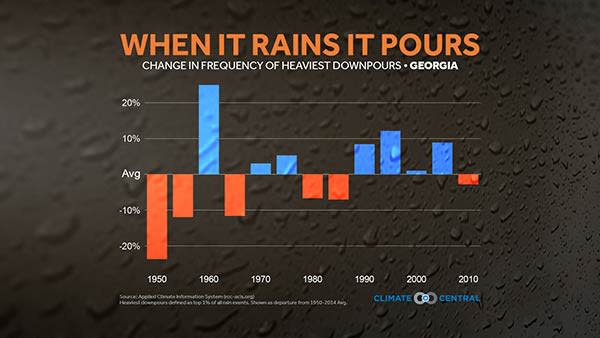It’s only been two weeks since Oklahoma City was blasted with seven inches of rain in 24 hours—the third largest single-day rainfall total since record-keeping began in 1891. It’s less than two years since Philadelphia got a record 8.02 inches of rain in a day—7.35 inches of it in only four and a half hours.
Heavy precipitation occurrences are on the rise all over the U.S. That’s consistent with the fact that the U.S., like the world, is warming under a thickening blanket of greenhouse gases. For every 1°F of temperature increase, the atmosphere can hold 4% more moisture, which means there’s more available to fall as rain or snow.
In order to find out how heavy precipitation has changed in each state with these rising temperatures, we analyzed the heaviest 1% of precipitation events at more than 3,000 stations across the continental U.S.
The results are consistent with last year’s NCA: Individual states in the Northeast showed substantial statewide increases. States in the West and Southwest were less pronounced, and some states showed no clear trend at all. That’s not a surprise, though, as climate scientists expect different regions to see different trends. But on average across the U.S., the trend towards more heavy downpours matches what has also been observed globally.
Methodology: For this analysis, we looked at the top 1% of daily rainfall events at individual stations nationwide since 1950. The thresholds for heavy precipitation events in 165 cities and metropolitan areas are available here. We took the average number of these events across each NCEI (formerly NCDC) climate division and then averaged these values across each state, weighting the number of events by the relative area of each climate division. The charts illustrate how much each 5-year period differs from the 1950-2014 average.
